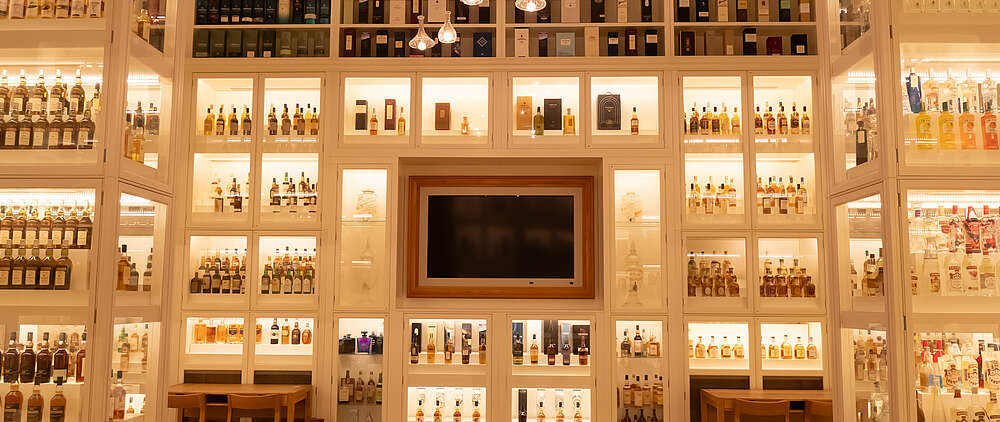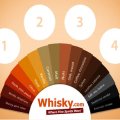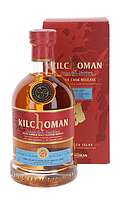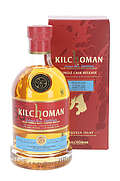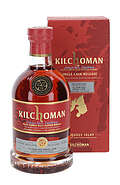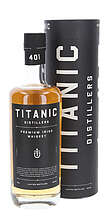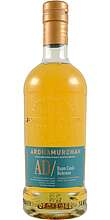Alcoholic beverages
Do you enjoy alcohol? Or do you drink a lot of alcohol? Whisky, beer or wine?
According to a report by the World Health Organisation (WHO), alcohol consumption is declining worldwide. However, this does not mean that the current figures are not still too high. High consumption in particular is harmful to health. But the development of the figures shows a trend: less alcohol is being consumed, but of a higher quality. But what does this mean for the individual types of alcohol? We take a closer look at this topic.
Alcohol consumption in the world
As already mentioned, the WHO has published a study that quantifies the average alcohol consumption per inhabitant of a country in 2016. To see the differences, here are a few figures:
- (1.) Moldova / 15.2 litres
- (2.) Lithuania / 15 litres
- (3.) Czech Republic / 14.4 litres
- (5.) Germany / 13.4 litres
- (6.) Ireland / 13 litres
- ...
- (16th) Russia 11.7 litres
- (23rd) GB 11.4 litres
- (43rd) USA 9.8 litres
The figures show the consumption of pure alcohol per inhabitant from the age of 15. They therefore do not reflect reality (a 70-year-old woman probably does not consume the same amount as a 25-year-old man). In addition, not all alcohol is of the same origin. These figures should also be differentiated by type of alcohol. Liquor has a higher alcohol content than beer. So when we talk about one litre of pure alcohol, we mean far fewer bottles of schnapps than bottles of beer.
In Germany, an average of 99.7 litres of beer, 20.1 litres of wine and 5.3 litres of spirits were consumed per capita in2019. Beer therefore accounts for the largest proportion of alcoholic beverages. If we convert the 99.7 litres per capita to 0.5 litre bottles, that's 199.4 bottles per year. Compared to wine with 28.6 bottles (1 bottle = 750ml) and spirits with 7.6 bottles (1 bottle = 700ml), this is considerably more. If we want to reduce consumption in general, beer should be the first target.
But what about our personal consumption? Let's compare the alcohol content of each type in a slightly exaggerated session: if we are 'really thirsty', we drink three double whiskies, where each has 4cl with 1.6cl of pure alcohol. We would have 12 cl = 4.8 cl of pure alcohol. That's a lot. What about wine? Wine has an average alcohol content of 12%. If we drink a bottle (again, a little exaggerated) we drink 75 cl = 9 cl of pure alcohol. That's more than three double whiskies. Even if we drink four beers with 5% alcohol volume, we are still at 142 cl = 7.1 cl of pure alcohol. We often assume that beer and wine are less bad than spirits because they have a lower alcohol content. But as we can see from the example, the average amount of drinks in a session is not comparable. Wine is the highest at 9cl of pure alcohol and whisky the lowest at 4.8cl.
As we can see, it is not only the type of alcohol that is decisive, but also the quantity. If it is not even more important.
Alcohol and health
The German Nutrition Society (DGE) generally recommends avoiding alcohol. However, it also specifies a tolerable maximum amount. This is described more precisely as a maximum daily consumption of 20 grams of pure alcohol for men and 10 grams for women.
If we look at the different types of alcohol, this corresponds to these quantities:
Men (20gr):
- 1 bottle of beer (500ml x (5% /100) x 0.8 = 20 grams of alcohol)
- 1 glass of wine (200ml x (12% /100) x 0.8 = 19.2 grams)
- 3 drams of whisky (60ml x (40% /100) x 0.8 = 19.2 gr)
Women (10gr):
- ½ bottle of beer (250ml x (5% /100) x 0.8 = 10gr)
- ½ glass of wine (100ml x (12% /100%) x 0.8 = 9.6 gr)
- 1 ½ dram of whisky (30ml x (40% /100) x 0.8 = 9.6 grams)
Alcohol is a drug that has been scientifically proven to harm our body and mind. However, small amounts can also reduce the risk of certain types of illness. But apart from the purely health aspects, alcohol also has an addictive factor. It is not the amount of alcohol consumed that matters, but the individual's sensitivity to addiction. Some people develop an addiction after just a few glasses, while others do not develop an addiction their entire lives, even though they consume large quantities. It is important that everyone keeps themselves under control and reflects on their own consumption.
We and our platform recommend cautious consumption of high-quality alcohol. For more information on alcohol and health, you can visit this page.
Alcohol Consumption Around the World
As mentioned, the WHO published a study in which the average litres of pure alcohol per head in 2016 in each country was shown. To see the difference we picked some numbers:
- (1.) Republic of Moldova / 15.2 l
- (2.) Lithuania / 15 l
- (3.) Czech Republic / 14.4 l
- (5.) Germany / 13.4 l
- (6.) Ireland / 13 l
- ...
- (16.) Russia 11.7 l
- (23.) UK 11.4 l
- (43.) USA 9.8 l
Those numbers show the average of pure alcohol consumed by every citizen (from the age of 15). Therefore this number is not showing a real picture (a 70-year-old female is most likely not drinking the same amount as a 25-year-old male). Additionally, not every alcohol is the same. When we see those numbers, we have to separate the types of alcohol. Schnapps has a higher percentage of alcohol than beer. So when we say that 1 litre of pure alcohol was consumed, this means way fewer bottles of Schnapps than bottles of beer.
In the USA in 2016 the 9.8 litres are composed of three parts: 47% Beer (4,61 litres), 35% Spirits (3,43 litres) and 18% Wine (1,76 litres).
If we calculate with the average alcohol percentage of each type of beverage, this results in:
- Beer: 4,61 litres pure alcohol with an average 5% alcohol volume = 92,2 litres
- Spirit: 3,43 litres pure alcohol with an average 45% alcohol volume = 7,62 litres
- Wine: 1,76 litres pure alcohol with an average 12% alcohol volume = 14,67 litres
Beer is the biggest part of consumed alcoholic beverages. If we take the yearly 92.2 litres per head, that means that every citizen of the USA is statistically drinking 259.72 bottles of Beer in one year. (average bottle with 355 ml). In comparison to Spirit with 10.89 bottles (average bottle with 700 ml) and Wine with 19.56 bottles (average bottle with 750 ml), this is way more. If we want to lower the overall consumption, Beer should be the first matter to approach.
But what is our personal average alcohol consumption? Let’s compare the alcohol content of each type of drink in one exaggerated sitting. If we are ‘very thirsty’, we drink three doubled Whiskies, where one has 4 cl with 1.6 cl pure alcohol. We would drink 12 cl = 4.8 cl pure alcohol. That is a lot. How about Wine? Red Wine has an average of 12% alcohol volume. If we drink one bottle of Red Wine (again, a little bit exaggerated) we would drink 75 cl = 9 cl pure alcohol. That is way more than the three doubled Whiskies. Even if we drink four Beers, with 5%, we still consume 142 cl = 7.1 cl pure alcohol. Often times we think that Beer and Wine are not as bad as Spirits like Whisky because they have a lower alcohol percentage and therefore drink more. But as we can see in the example, the amount of one average drinking session is not comparable. Wine is the highest with 9 cl pure alcohol and Whisky is the lowest with 4.8 cl.
We see that not only the type of drink we enjoy matters but that the amount is also, if not more, important.
The Advised Alcohol Intake of the US Government
In the ‘2020-2025 Dietary Guidelines for Americans’ the citizens are advised to drink nothing, or in moderation. Moderation is described further as ‘two drinks or less’ in a day for men and ‘one drink or less’ in a day for women. The recommendation for each type of drink are as follows:
- Beer (5% ABV) 12 ounces / 340 gr / 340 ml = ca. 1 bottle
- Wine (12% ABV) 5 ounces / 141.8 gr / 148.9 ml = ¾ Wine glass (200 ml)
- Distilled Spirits, like Whisky (40% ABV) 1.5 ounces / 42.5 gr / 21.9 ml = 2.19 cl
hose numbers are way below the example we showed. And for a good reason: alcohol is a drug that is scientifically proven to damage our body and mind. If we enjoy only a little bit, however, it can reduce the risk of some types of cancer. But besides all of the health-related matters, alcohol has a high addiction factor. It doesn’t depend on the amount but on the sensitivity of each person. Some may develop an addiction after few drinks, while some never get addicted even after a few binge drinking sessions. It is important to always keep oneself in check and reflect the own consumption.
We and our platform advise the careful consumption of little quantities with high-quality Spirits. For more information on alcohol & health visit this page.



